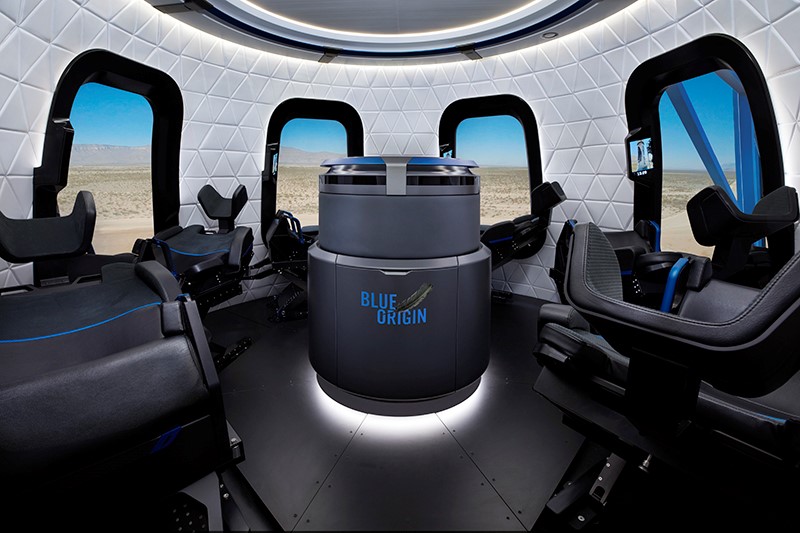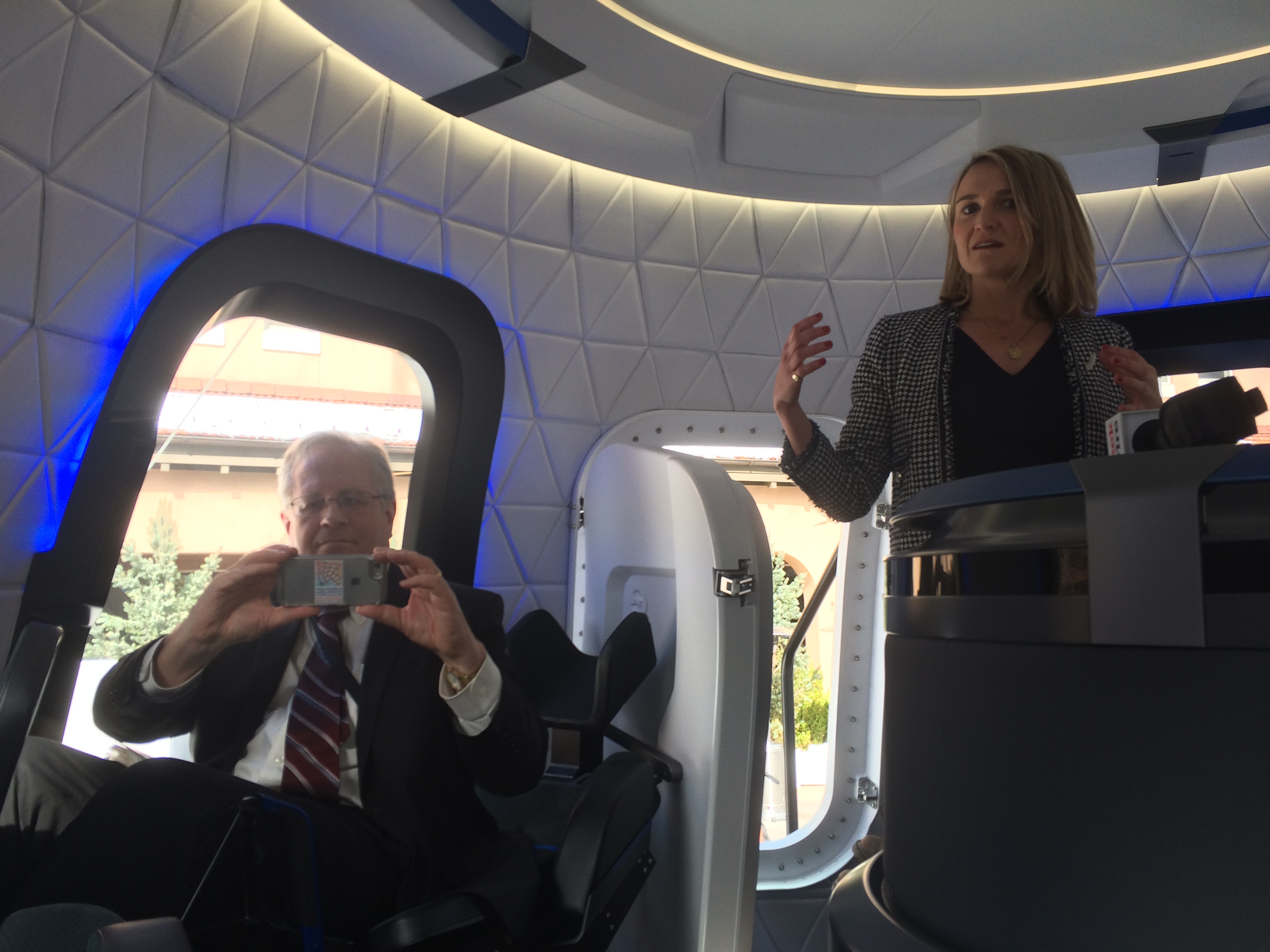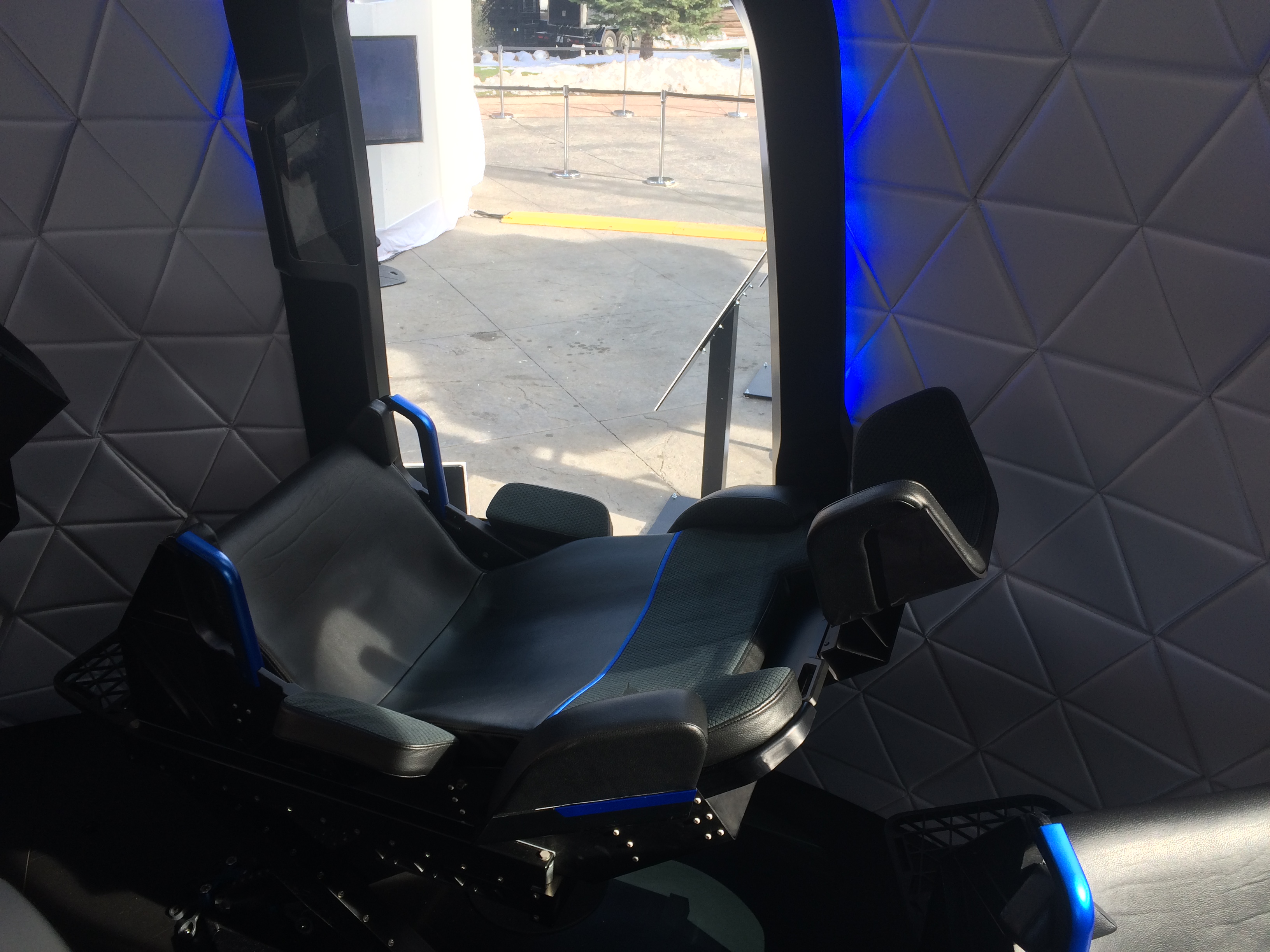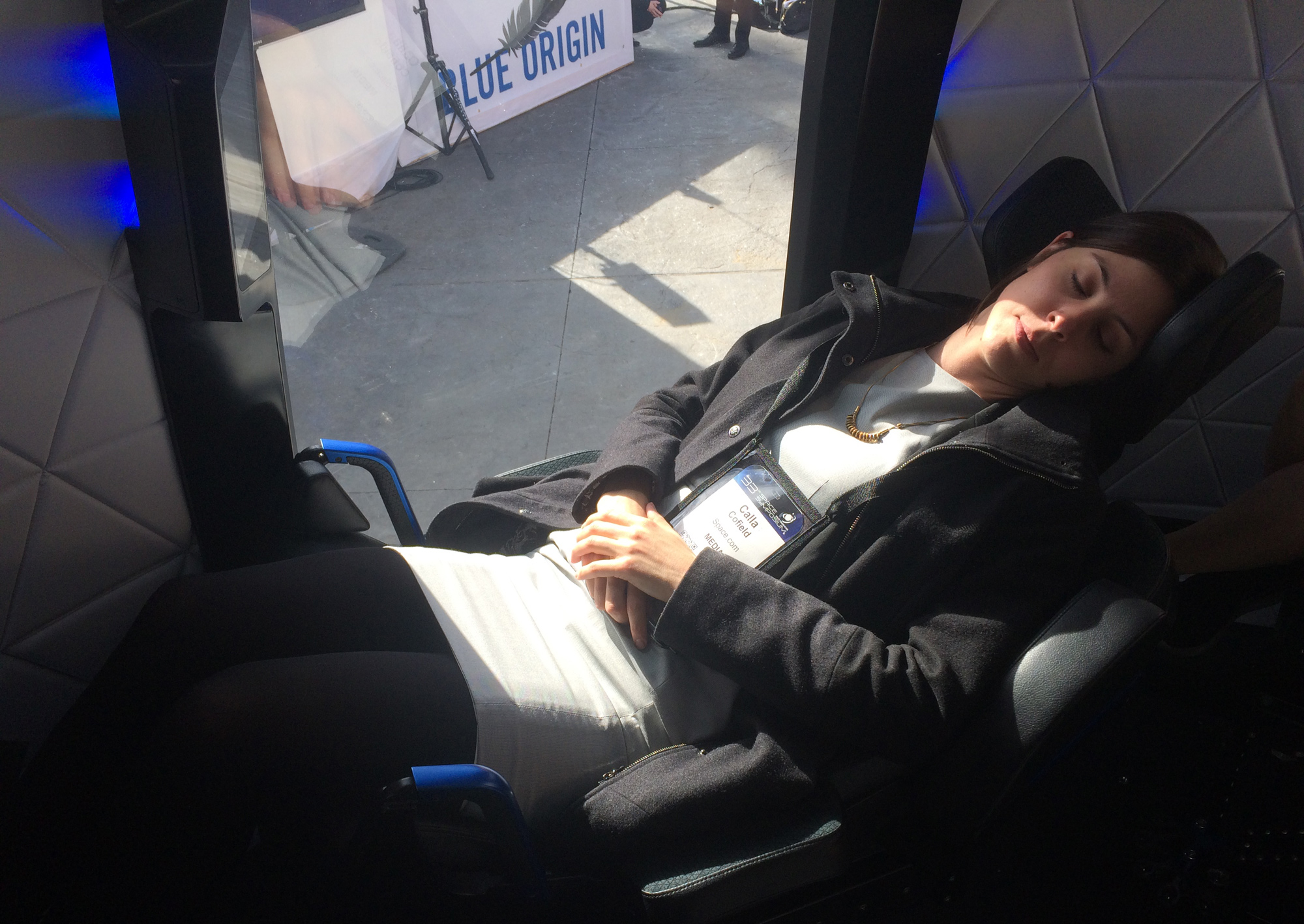Aboard Blue Origin's New Shepard: My Imaginary Journey to Space

COLORADO SPRINGS, Colo. — The reclining seats are so soft, I might want to take a nap here — but I'm sure the rocket underneath me will jolt me awake.
That was my first thought as I settled into a chair aboard a mockup of the New Shepard capsule, which will carry passengers on short trips into space for billionaire Jeff Bezos' private spaceflight company Blue Origin. While I didn't get to go to space, I did get to dream about what the trip might be like.
The capsule looks like most of NASA's human-spaceflight capsules — it's sort of a cross between a cylinder and a trapezoid. Entering is a little uncomfortable — the entry hatch is about half the height of a typical doorway, so I have to stoop a little to enter. The floor inside drops down about a foot from the bottom of the opening, which is also awkward. But, I'm thinking, it’s a totally forgivable inconvenience in a vehicle that's built to go to space. [How Blue Origin's New Passenger Spaceflights Will Work (Video)]

There are six chairs lined up around the capsule's perimeter. Each one bumps up against a huge window — the largest windows to ever go to space, according to Blue Origin. The seats are tilted back like a dentist's chair, but they bend where the person's knees are, which makes me sink into the seat easily. Even though the mockup doesn't include seat belts, I feel like I'm being held securely in place, both by the chair's shape and the built-in flaps and bumpers that line both of its sides.
The seats are covered with the same kind of supersoft leather that's used for first-class seats on commercial airliners, according to Ariane Cornell, head of astronaut strategy and sales for Blue Origin, who led a media tour of the capsule at the 33rd annual Space Symposium. The soft leather, combined with the supportive shape of the seats, makes me feel so comfortable that I'm tempted to take a nap.
But then suddenly, I hear the engine roar.
It's fake, of course. A tablet-size screen mounted on the wall next to each seat shows a run-through of what the full 11 minutes of the flight will be like, from takeoff to landing, complete with sound effects. I let the illusion carry me away and try to imagine sitting inside one of these capsules as it hurtles skyward, reaching the boundary of space, reaching the peak of its flight path and creating a weightless environment for the travelers inside.
Get the Space.com Newsletter
Breaking space news, the latest updates on rocket launches, skywatching events and more!

The inside of the capsule was designed to make it easy for the passengers to move around when they're weightless, Cornell said. There are handholds all over the place and more soft material on the walls. At the center of the capsule is a solid, round cylinder that's about 3 feet tall. This, Cornell explains, houses the engine that would propel the capsule away from the rocket if something went wrong.
Above the seats and the escape engine is an open bit of headroom. The capsule's interior volume is 530 square feet (15 cubic meters), which is more than 10 times as big as the Mercury capsule that Alan Shepard rode in when he became the first American in space, according to Blue Origin. The capsule isn't large enough for all six people to start doing flips simultaneously, though. Cornell said part of the training that customers will go through will include "etiquette" for weightlessness — which I would assume means being aware of your crewmates as you float around the capsule.
But if moving around in microgravity were the only thing someone wanted to experience during this trip, then they'd probably do better if they bought a ticket on one of those airplanes that flies in a series of parabolic arcs, causing passengers to experience 30-second bouts of weightlessness. Those planes have lots of space for passengers to move around and people to assist you as you experience your brief ability to fly.

But on New Shepard, I can imagine that the view will be the draw for potential passengers. The capsule will go above the Kármán line, which is considered the boundary between Earth's atmosphere and space. I can imagine floating languidly just above my seat, staring out at the planet — seeing the curve of the massive blue marble, backdropped by the pure blackness of space. So while weightlessness might be fun, when I think of that view of Earth from space, I imagine it would be a deeper, more emotional and spiritual experience.
My brief visit inside the New Shepard capsule was a far cry from a trip to space, but something about being inside that capsule leaves me wondering if I wouldn't try to scrape together the cash to buy a ticket.
Follow Calla Cofield @callacofield. Follow us @Spacedotcom, Facebook and Google+. Original article on Space.com.
Join our Space Forums to keep talking space on the latest missions, night sky and more! And if you have a news tip, correction or comment, let us know at: community@space.com.

Calla Cofield joined Space.com's crew in October 2014. She enjoys writing about black holes, exploding stars, ripples in space-time, science in comic books, and all the mysteries of the cosmos. Prior to joining Space.com Calla worked as a freelance writer, with her work appearing in APS News, Symmetry magazine, Scientific American, Nature News, Physics World, and others. From 2010 to 2014 she was a producer for The Physics Central Podcast. Previously, Calla worked at the American Museum of Natural History in New York City (hands down the best office building ever) and SLAC National Accelerator Laboratory in California. Calla studied physics at the University of Massachusetts, Amherst and is originally from Sandy, Utah. In 2018, Calla left Space.com to join NASA's Jet Propulsion Laboratory media team where she oversees astronomy, physics, exoplanets and the Cold Atom Lab mission. She has been underground at three of the largest particle accelerators in the world and would really like to know what the heck dark matter is. Contact Calla via: E-Mail – Twitter









